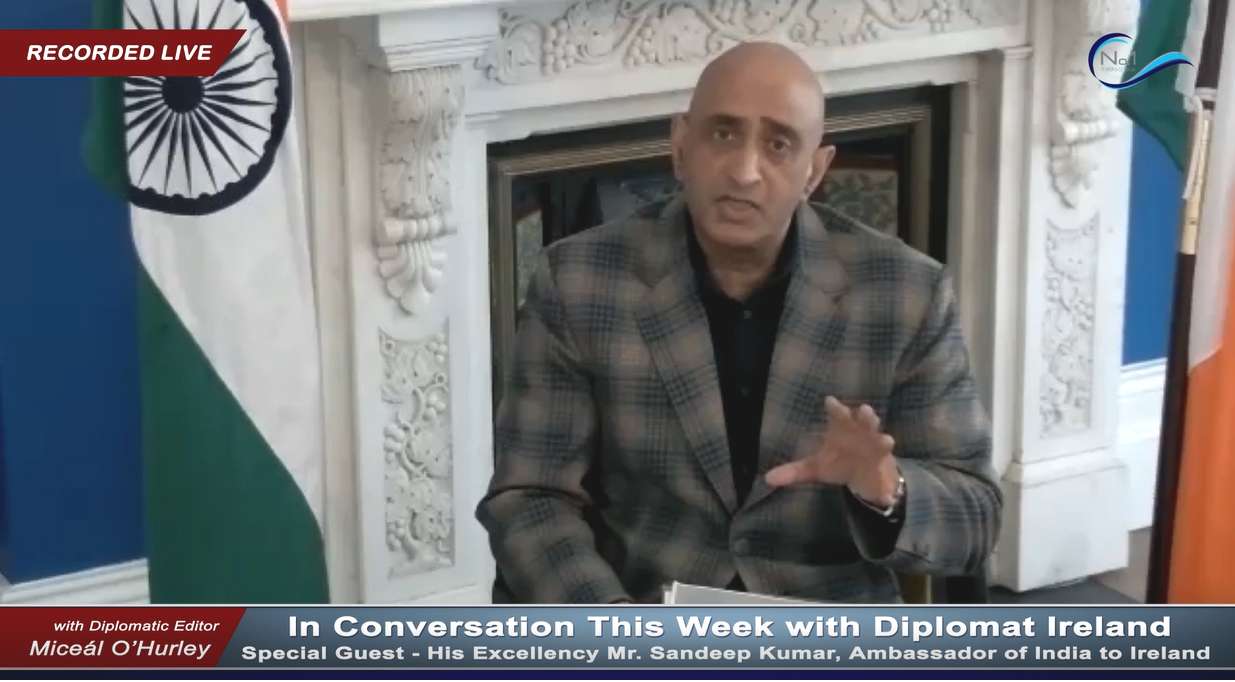by Miceál O’Hurley
YEREVAN — Last Friday, Russian Foreign ministry spokesperson Maria Zakharova made a thinly-veiled threat to Armenia after it participated in a food security forum as part of the Ukrainian Peace Formula earlier in September. Zakharova said, “If people are interested in food security, they should proceed from the fact that their country has food security. Maybe it would be better to contact Russia via video conference to discuss your food security? That would be honest and respectful. Why engage in fraud behind the backs of those who feed you and ensure food security”.
Yerevan’s and Moscow’s ties are both deep and historic. Armenia and has long been a member of the CSTO military bloc. However, difficulties arose after the Kremlin sided with Azerbaijan against Armenia in the Nagorno-Karabakh conflict. Other disputes with Moscow led Armenia’s Prime Minister Nikol Pashinyan to contemplate Armenia’s future military cooperation with Russia. Despite Russia maintaining some 3,500 soldiers on Armenian soil there have been calls by a wide-base of the Armenian public to bring an end to Russia’s military presence in in their South Caucus country.
In March 2024, Viktor Bondarev, a senior lawmaker in the Federal Council, Russia’s upper house of parliament, declared Armenia’s decision to replace Russian Federal Security Services (FSB) officials at Zartnots Interational Airport as Armenia’s “first major unfriendly step” against Russia. He then warned the Pashinyan government against future downsizing of Russia’s military presence in Armenia, saying he, “would not recommend that the Armenian authorities even think about” bringing an end to the Russia’s military presence.
Armenia is walking a fine line with Russia on military cooperation. Also in March 2024, Armenian Foreign Minister Ararat Mirzoyan was careful to stress that Armenia seeks for Russian border guards to leave only the airport. No mention was made of other Russian troop instillations or operations.
Armenia’s Border Guard service announced that as of 1 August 2024 it would be in full operational control of Zartnots International Airport where Russia’s Federal Security Service (FSB) had previously led operations. And, despite Bondarev’s warning, at a 31 August 2024 press conference Pashinyan was asked about the possibility of Armenia exiting the CSTO military alliance with him replying, “I cannot specify a date or time for leaving the CSTO, and regarding the military base, we have no issues at present, so I cannot comment on that either.”
Defense and security are not the only areas in which Armenia and Russia share common bonds. Armenia is a member of the BRICS economic platform. Despite robust trade with Russia and within the BRICS framework, trade data shows Armenia is moving closer to the Europe. As Armenia’s economy has struggled it has looked to diversify. According to Pashinyan, “Yes, we have increased our trade turnover with the EAEU. We want to increase it with the EU, [and] work with both the European Union and the United States”.
Like the Georgian and Ukrainian people, Armenians indicated through a July 2024 Gallop poll that 57.6% support for joining the EU. When asked last month about the prospect of Armenia seeing EU membership, Pashinyan said it was Armenia’s intention when there is “more or less real opportunity to join.”
Russia has made no secret of their displeasure with any possibility that Armenia may seek to turn towards the European Union for its future.
It would be a mistake to assume Armenia is escaping the Russian orbit.
Russia’s trade with Armenia has actually increased at the very time Armenia has increased its trade with the EU. Albeit heavily sanctioned, Russian Federation trade with Armenia nearly doubled in 2022, reaching a high of $5.3 billion. Concurrently, Armenian exports to Russia almost tripled, from $850 million in 2021 to $2.4 billion in 2022. By 2023, Armenian exports to Russia had grown by another 38.8%, reaching a record high of $3.419 billion.
There has been no let-up in Armenian-Russian trade in 2024. In the first half of the year, trade turnover grew by more than two-and-a-half times marking another record level of trade at $8.4 billion. The additional revenue from Armenia-Russia trade elevated the economy as indicated by a 149% increase in imports from EU countries growing from $847 million to €2.17 billion in 2022. In all, Armenian-EU trade turnover between 2021-2022 rose from $2.14 billion to $2.48 billion.
Armenia has shown that its economic interests is vested in continuing to straddle and balance economic ties between BRICS and the EU.
The danger for the EU and Armenia’s Western-leaning ambitions is the type of trade that has propelled such growth. According to the NYTimes, Armenia’s import of highly sensitive categories of electronic components, semiconductor chips and other dual-use technologies is at the core of the more robust trade with Russia since their full-scale invasion of Ukraine. It raised the possibility that Armenia may be engaged in the redistribution of goods to Russia, some of which may run afoul of sanctions regimes.
According to the U.S. Bureau of Industry and Security, between 2021-2022, Armenia’s imports of chips and microprocessors from the U.S. increased by a staggering 515%. Imports of the same technology from the EU also rose, by a hefty 212%. Export data confirms that an alarming 97% of these dual-use technology products were ultimately shipped to Russia. Battlefield remnant recovery has verified that such technology has been widely weaponised by Russia contrary to international sanctions regimes.
In March 2024, two American citizens were arrested for bypassing U.S. sanctions by selling advanced aviation equipment to Russia through third-party countries – including Armenia.
Armenia’s willingness to flex their muscles and assert their independence from Russia, BRICS and CSTO may have more to do with placating a domestic population that desires a future in Europe than actually emerging from their status as a Russian satellite State. Whatever the political rhetoric – trade data indicates Armenia will remain close to their Russian trading and military partner whatever the desires of their domestic population. Given threats from Russian lawmakers like Bondarev, Armenia may become another Moldova, Georgia or Ukraine should their populations desire to continue to move towards European integration.
















































